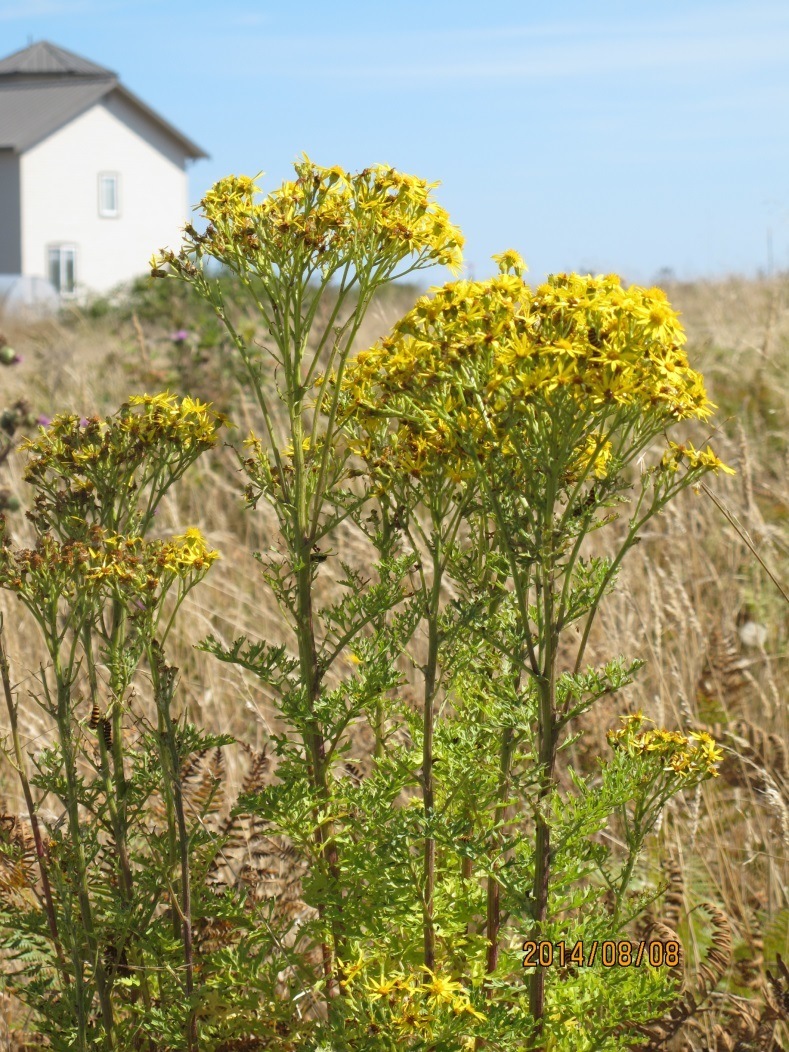It is time, once again, for residents of San Juan County to take special notice of tansy ragwort, that deadly, yellow-flowered noxious weed that seems to be popping up everywhere lately.
A member of the asteraceae, sunflower family, that originated from Europe and western Asia, tansy ragwort is a Class B noxious weed in Washington state that is designated for control. Its alkaloids, once metabolized, are toxic to most livestock and can cause cumulative, irreversible liver damage to cattle and horses, among other grazers. There is a risk of contaminating the human food chain as well, in milk, honey and flour. Once the plant is cut and dried, perhaps as part of a bale of hay, it becomes more palatable to grazers and can be consumed along with the harmless vegetation.
You are likely to see tansy ragwort on county roadsides, in old pastures and meadows or along fencelines, even in open forests or wetlands. It spreads mostly by windborne seed but can make its way to new locations by seeds hitching to clothing, animals’ coats, or machinery. If left unchecked, tansy ragwort can contribute new seeds that may remain viable in the soil for up to 16 years, and it will increasingly displace desirable vegetation. Prevention is obviously in the public’s best interest.
If you have tansy ragwort on your property, here’s how you can be rid of it, at least for this season. First, it is important to wear gloves when handling this plant, as all its parts are potentially toxic. Carefully pull flowering plants out of the ground, attempting to get at least some of the roots, too. If a plant snaps off at the base, try to dig up the remainder. It is important to make sure that the flower heads are disposed of in a plastic bag, as they can produce viable seeds even after being cut or pulled. The rest of the plant, once flowers are removed and bagged, can either be left on-site to decompose or, if this would pose a risk to animals or children, the entire plant can be taken to your local transfer station for free disposal (just let them know what it is and that it is a noxious weed). You can also add bagged tansy ragwort to your regular curbside garbage if you have this service. You may notice that not all tansy ragwort is in bloom right now, with some in the first-year, vegetative phase, which appears as a clump of ruffled leaves called a rosette. These can be pulled or dug up as well, being especially mindful about removing most — if not all — of the roots, or it will simply re-sprout. Once extracted from the soil, they can be bagged or left to wither on a hard surface, again making sure that you are not providing a temptation for people, pets or livestock to nibble on them.
These manual techniques are well suited for smaller infestations, but larger patches of noxious weeds may warrant other control options. If you’d like further information on tansy ragwort and how to control it, please contact the San Juan County Noxious Weed Control Program staff at 360-376-3499, or visit our website. This concludes this Noxious Weed Alert. Thank you for your attention!
The San Juan County Noxious Weed Control Program, with special thanks to the Washington State Noxious Weed Control Board for contributing to this article.



